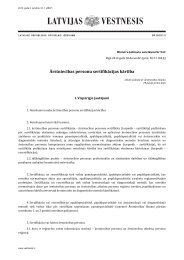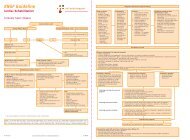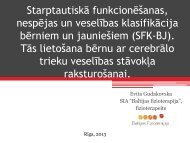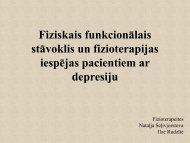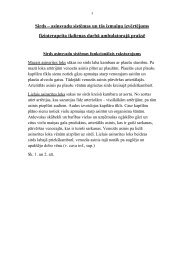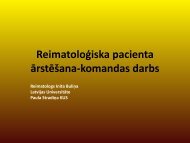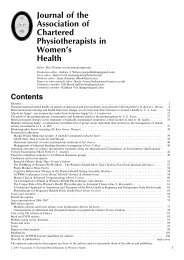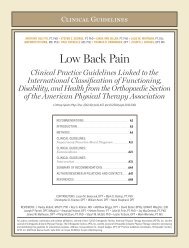KNGF Guideline Cardiac rehabilitation
KNGF Guideline Cardiac rehabilitation
KNGF Guideline Cardiac rehabilitation
Create successful ePaper yourself
Turn your PDF publications into a flip-book with our unique Google optimized e-Paper software.
<strong>KNGF</strong> Clinical Practice <strong>Guideline</strong> for physical therapy in patients undergoing cardiac <strong>rehabilitation</strong><br />
Supplements<br />
Physical therapy exercise test (6-minute walk test or shuttle walk test)<br />
Purpose of test:<br />
Main test requirements:<br />
Test results:<br />
Conclusion regarding the use of the test results or evaluation:<br />
Analysis<br />
◦ 1. Patient’s health status (in terms of impairments / limitations / participation problems)<br />
◦ 2. Are there any physical impediments against improving the patient’s physical condition?<br />
- limited cardiac capacity<br />
- other diseases or disorders, such as musculosketelal problems<br />
◦ 3. Are there any other factors that affect the patient’s natural ability to improve their physical condition?<br />
- psychological impediments: anxiety, depression, perceived disability, sleeping problems<br />
- stress, fatigue<br />
- lifestyle, smoking, lack of physical activity, dietary habits<br />
- use of medication<br />
- social functioning<br />
◦ 4. What is the intended future status as regards ADL, leisure, work and hobbies? (Patient’s presenting problem and goals)<br />
◦ 5. Is the target status feasible (in view of points 2 and 3); in other words, can the impediments be reduced?<br />
◦ 6. What are the options for physical therapy to reduce the patient’s health problem?<br />
Screening questions<br />
◦ 1. Is the patient’s exercise capacity objectively reduced?<br />
◦ 2. Is the patient’s exercise capacity subjectively reduced due to anxiety or high degree of perceived disability?<br />
◦ 3. Is there a gap between patient’s current and optimal psychological functioning?<br />
◦ 4. Is the patient’s social functioning affected or threatened?<br />
◦ 5. Does the patient engage in modifiable unhealthy behavior?<br />
Treatment plan<br />
The treatment plan sets out the patient’s individual <strong>rehabilitation</strong> goals.<br />
The physical therapy has the following objectives for the patient:<br />
◦ 1. exploring one’s own physical limits<br />
◦ 2. learning to cope with physical limitations<br />
◦ 3. optimizing exercise capacity<br />
◦ 4. diagnostic: evaluating the patient’s exercise capacity and its correlation with objectifiable defects<br />
◦ 5. overcoming fear of physical exertion<br />
◦ 6. developing and maintaining a physically active lifestyle<br />
Therapeutic process for cardiac <strong>rehabilitation</strong><br />
◦ information / advice<br />
◦ individual exercise program<br />
◦ relaxation program<br />
V-08/2011<br />
39



